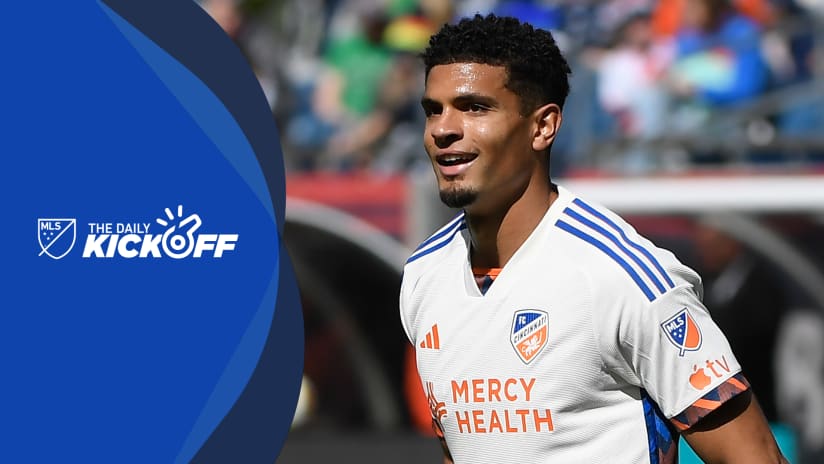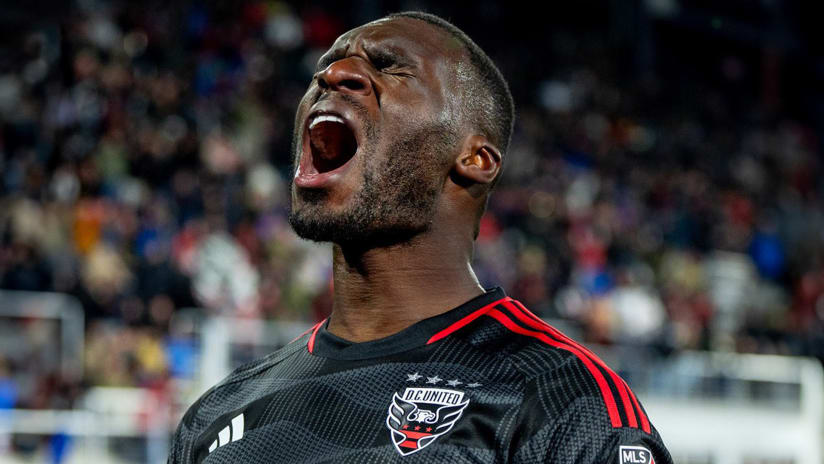it came against Mexico in the 1991 Pan American Games final and was, quite properly, one of his curling free kicks -- the United States was still feeling its way back into the international game.
That was a time when you almost scratched your head in wonderment when players said they were chasing a pro career although they came from a country with no successful professional league and faced almost insurmountable odds if they chose to try going overseas. </p>
A year after Moore's goal proved that a United States team, albeit at less than senior level, could defeat arch-rival Mexico, Brad Friedel, Mike Burns, Claudio Reyna, Cobi Jones and Alexi Lalas as well as Joe-Max were part of the Olympic team in Spain. Marcelo Balboa, John Harkes, Kasey Keller, Tony Meola, and Eric Wynalda were of the emerging generation, too, all roughly of an age. </p>
All of them would spend the best part of a decade in national team shirts as the United States joined Mexico atop the CONCACAF ladder and earned its current FIFA ranking among the most respected sides in the world. Today only the goalkeepers, Reyna and Cobi Jones are still regulars at the highest level. Age, injuries and the wear-and-tear associated with elite play have claimed many of the others.</p>
As Moore steps away from Major League Soccer's New England Revolution, his career can serve as a road map of the kind of dedication required of a young American player who grew up just as the old NASL was collapsing and before the United States national team program was capable of offering enough games for players to truly grow.</p>
Moore went to Europe as a youngster to improve his game, then played at UCLA at a time when the Bruins were as good as anyone in the collegiate game. He went on to play in Ecuador with Emelec, had stints with 1. FC Saarbrücken and 1. FC Nürnberg, in Germany, before enjoying his greatest success at Everton from 1999-2002. </p>
He started and finished his MLS career in New England and leaves the Revolution as one of the club's most popular players, although injuries robbed him of too many games at Foxboro. When he was fit, Joe-Max was terrific; when he wasn't 100 percent he just plain worked harder.</p>
Perhaps the career moment which should be bronzed came in the cold of Columbus in the opening match of the final round of 2002 World Cup qualifying. Mexico was the opponent and coach Bruce Arena lost both Reyna and Brian McBride to first-half injuries. Joe-Max, who often played more as withdrawn forward or advanced attacking midfielder than as a traditional front man, became part of a U.S. group which chased every ball, disrupted the Mexican game and kept the match under control.</p>
Late in the second half, Moore led an attack which broke down and resulted in a Mexican counter. He raced back upfield, probably covering 80 yards and put in a sliding tackle to block a Mexican shot. What no one knew at the moment was that Moore had torn a muscle just prior to that tracking run; Arena later called it one of the most remarkable plays he had ever seen, a tribute to Moore's tenacity and commitment to the national team.</p>
Indeed, much of what should be remembered about Joe-Max is intangible. Of course he scored memorable goals, was always eager to take free kicks or penalties, shrugging off any pressure associated with those chores. And he will be recalled for his back flips after scoring, for the smile which lit up the field when things were going well.</p>
Harder to put in perspective is the hidden quality. For several years it just seemed that the United States played better when Joe-Max was in the lineup. Perhaps it was his work rate, perhaps the fact with Moore running after everything, opposing teams had less time to think. As likely, it was that quality we often speak of in sports, but rarely can define: Joe-Max Moore made his teammates better.</p>
And -- along with that group of players now being thinned by retirements -- Joe-Max Moore helped to lay the groundwork for the modern American game. Now young players have options at home, don't have to elect to be soccer vagabonds. By coming back from Europe -- and often from considerably more lucrative contracts -- Joe-Max and his contemporaries provided the name players MLS had to have to survive in the difficult battle for recognition on a crowded United States sports scene.</p>
As we watch the second generation grow, let's remember the kids of the 1980s who took a chance on a game few thought could make it in America. And Joe-Max Moore's smiling approach to soccer is as good an icon as any for that trip.</p>
Jerry Trecker retired from The Hartford (Conn.) Courant in June after 47 years covering soccer around the world. This story was not subject to the approval of Major League Soccer or its clubs.











